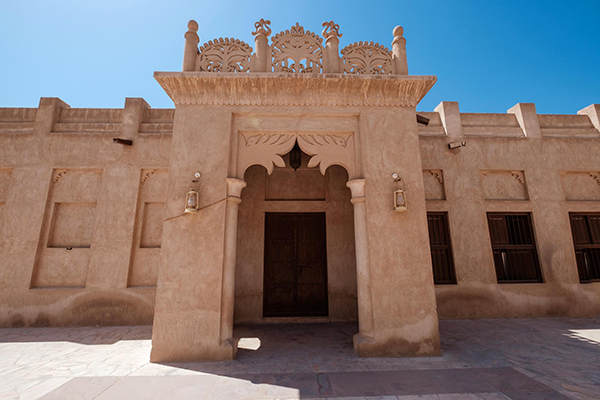, we got a peek into the city's historic past. Then, check out the Dubai Museum's vibrant and evocative patterns, complete with life-size figures and sound effects. We explore the "traders' paradise" by strolling through the oldest souk in Dubai and its interesting lanes.
At the Spice Souk, the enticing aroma of dried fruits, spices, and perfumes creates a truly Arabian ambiance (market).
Dubai's Creek:
The Creek, which divides Deira and Bur Dubai, two significant areas that have significantly contributed to Dubai's development into the megacity it is today, is situated in the centre of Dubai.
Although the creek is simply a saltwater inlet, it has evolved over time into the centre of the city's economic and residential activity. These Dubai Creek facts will enlighten history fans and people who enjoy all things vintage about one of the city's most popular tourist spots.
Facts About Dubai Creek:
The Dubai Creek region has a richer history than you might realize. It's not just the emirate's first significant port; it's also rich in historical significance.
- Dubai Creek, along with other ports in the Arabian Gulf, has functioned as a secure harbour for trade.
- In the 1950s, a tiny canal was created as the creek broke open the ground.
- The Dubai Creek was once known as the River Zara in Greek.
- The creek did not have any circulation in the past. Just as it enters from the sea, the water abruptly comes to an end at the Ras Al Khor sanctuary.
- When the Bani Yas tribe decided to settle here, the Al Maktoum dynasty was established on the creek's banks. These early settlers left behind descendants who currently rule Dubai.
- Sheikh Rashid bin Saeed Al Maktoum ordered the construction of a 4000-foot-long and 6-foot-deep extension.
- Where the cargo loading and unloading started, first dredged in 1961.
- Dubai Creek was once a major trading centre for goods like gold, spices, and locally caught seafood.
Historic Village:
Heritage Village is a kid-friendly location where you can see how people used to live in the desert. The village is a living time capsule with a mosque, a souk (market), and a camp that are designed to reflect life in the pre-modern UAE.
The classic oasis town, which is adjacent to the city centre on Marina Mall Island, provides a window into Abu Dhabi's past. You may buy or find artefacts here, and watch craftspeople weave fabric on a loom, produce pottery, and blow glass.
The Emirates Heritage Club, which holds workshops for traditional crafts, is also located in the area. Watch artisans exhibit age-old techniques like metalwork, pottery, weaving, and yarn spinning.
Visit Gold Markets in Dubai Heritage Tour:
The Gold Souk in Dubai is well-known for providing a vast assortment of gold objects in a wide range of styles from all over the world. There are hundreds of gold shops there, some of which have been operating for more than 40 years.
We promise that the market will surpass your wildest gold expectations and become one of your favourite spots in Dubai. Read on to learn why. The Gold Souk is the ideal location to purchase gold. All visitors to the UAE are aware that the Deira Souks are one of the most significant shopping destinations.
As a result, the gold souk is unquestionably the best location to buy gold. Given that it is all about breathtakingly beautiful gold, this venue has to be your favourite if you adore gold. This gold market will provide you with your best shopping experience and UAE memories.
Jumeirah Mosque:
The Jumeirah Mosque is one of the area's oldest attractions, despite Jumeirah's fame for its eccentric eateries and abundance of cosmetic and beauty clinics.
The late HH Sheikh Rashid Bin Saeed Al Maktoum, who was the ruler of Dubai at the time, constructed it. According to historical information, the Jumeirah Mosque was built between 1976 and 1979.
Jumeirah Mosque is notable for a number of reasons and is frequently cited as one of Dubai's most photographed mosques. It is fully constructed of white stone in the traditional Fatimid architecture, which originated in Egypt and Syria. The domes are decorated with intricate geometric patterns, Arabic calligraphy, and keel motifs. Due to the two minarets that surround the central dome, it is sometimes referred to as the "two minaret mosque." Although there is room for 1,300 people inside Jumeirah Mosque, many more will gather outside for Friday's congregational prayers.
Islamic Museum:
At the Museum of Islamic Art (MIA), which is home to one of the largest collections of Islamic art in the world, masterpieces from every country represent the diversity found in the islamic heritage.
